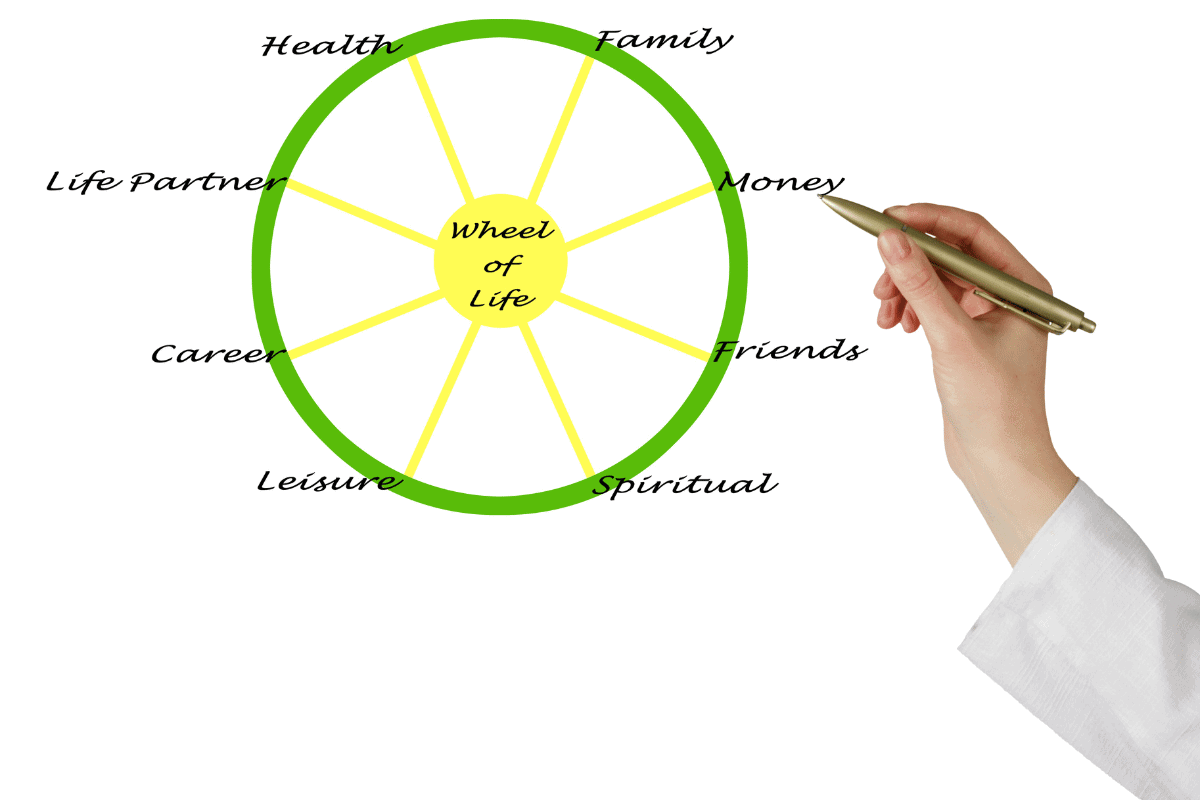The Wheel of Life in Buddhism
What is the Wheel of Life?
The Wheel of Life is a popular tool in life coaching used to help clients gain a clear and balanced overview of their lives. It aids in identifying areas of satisfaction and those needing improvement, facilitating meaningful conversations about personal growth, goal-setting, and life balance.
How the Wheel of Life is Used in Life Coaching:
- Introduction and Explanation:
- The coach introduces the Wheel of Life to the client, explaining that it’s a visual representation of different life areas (such as career, health, relationships, etc.) and helps assess satisfaction in each.
- Assessment Process:
- The client is asked to rate their current level of satisfaction in each life area, typically on a scale from 1 (very dissatisfied) to 10 (fully satisfied).
- These ratings are plotted on the corresponding segments of the wheel, creating a visual “wheel” once all areas are rated.
- Discussion and Reflection:
- The coach and client review the completed Wheel of Life, discussing the shape of the wheel.
- Areas where the wheel is uneven or “flat” indicate where the client may need to focus attention to achieve greater balance.
- Goal Setting:
- Based on the assessment, the coach helps the client set specific, actionable goals to improve lower-rated areas.
- The client is encouraged to prioritize areas that are most important to them and create a plan to enhance their satisfaction.
- Ongoing Coaching:
- The Wheel of Life can be revisited periodically to track progress and reassess life balance.
- It serves as a dynamic tool, allowing clients to see how their efforts are impacting different life areas over time.
Benefits of Using the Wheel of Life in Coaching:
- Holistic Perspective: It provides a comprehensive view of a client’s life, ensuring that all significant areas are considered.
- Clarity and Focus: Helps clients clarify where they are versus where they want to be, focusing their efforts on areas that will bring the most satisfaction.
- Motivation: Visualizing progress can be highly motivating, as clients see tangible improvements in their wheel over time.
- Self-Awareness: Encourages deep reflection and awareness, often revealing underlying issues or desires that may not have been immediately apparent.
Overall, the Wheel of Life is a versatile and effective tool in life coaching, fostering a balanced approach to personal development and helping clients create more fulfilling lives.








